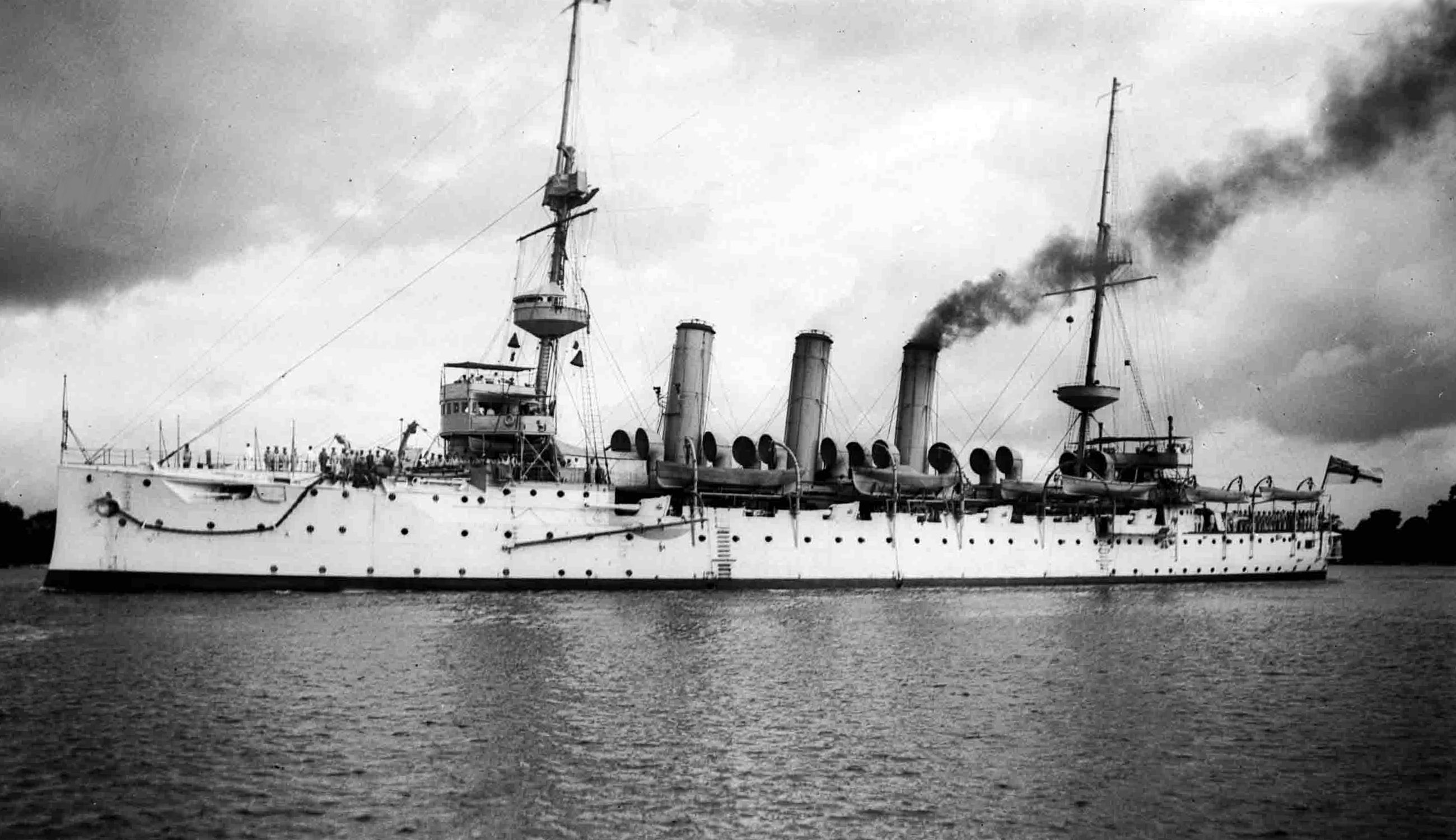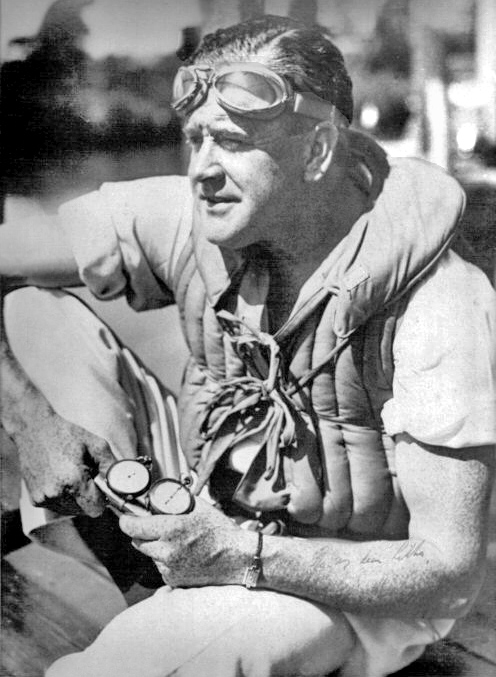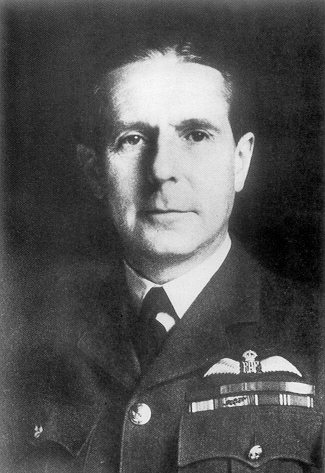|
Royal Air Force Marine Branch
The Marine Branch (1918-1986) was a branch of the Royal Air Force (RAF) which operated watercraft in support of RAF operations. Just days after the creation of the RAF itself, the Marine Craft Section (MCS) was created with the transfer of Royal Naval Air Service (RNAS) vessels and personnel to the new service. Originally tasked with the support of RNAS, and later RAF, seaplanes, Marine Craft Section was to achieve its greatest size during the World War II, Second World War, and achieved fame for its role in air-sea rescue operations. After the war MCS was granted full branch status on 11 December 1947, however post war the role of the new branch became greatly reduced with the end of the British Empire, the withdrawal of flying boats from service, and the increasing use of helicopters in air-sea rescue. The branch was disestablished on 8 January 1986. History Formation In 1918 the RAF was established through the merging of the aviation arms of the Royal Navy, the Royal Navy ... [...More Info...] [...Related Items...] OR: [Wikipedia] [Google] [Baidu] |
Royal Air Force Ensign
The Royal Air Force Ensign is the official flag which is used to represent the Royal Air Force. The ensign has a field of air force blue with the United Kingdom's flag in the canton and the Royal Air Force's roundel in the middle of the fly. The RAF Ensign was introduced in 1921 after some opposition from senior members of the Royal Navy. Various countries' air force ensigns have been based upon the RAF's ensign. Currently it is flown from the flagstaff of every Royal Air Force station during daylight hours and has been permanently displayed on the Cenotaph in London since 1943. Early history and authorisation Ever since the formation of the RAF in 1918, the Air Council had wanted to introduce a flag which would be flown at RAF stations. However, the Admiralty had the right to veto the introduction of any new flag that was to be flown within the British Empire or on a British vessel. Although the Admiralty were initially opposed to granting the RAF its own flag, after consi ... [...More Info...] [...Related Items...] OR: [Wikipedia] [Google] [Baidu] |
Seaplane Tender
A seaplane tender is a boat or ship that supports the operation of seaplanes. Some of these vessels, known as seaplane carriers, could not only carry seaplanes but also provided all the facilities needed for their operation; these ships are regarded by some as the first aircraft carriers and appeared just before the First World War. Terminology In maritime parlance a tender is a vessel that is used to support the operation of other vessels. In British usage, the term tender was used for small craft, with the term depot ship being used for large seagoing vessels. Flying boats and float planes even when based at home in ports and harbour had a need for small support vessels to operate.p British tenders were small craft of launch to pinnace size. These were used to ferry crews, stores and supplies between shore and the aircraft, to maintain the buoys used to mark out "taxiways" and "runways" and to keep these clear of debris to prevent foreign object damage, and in the case of ... [...More Info...] [...Related Items...] OR: [Wikipedia] [Google] [Baidu] |
Miss England
Miss England is a national beauty pageant in England. History The contest, title owned by the Miss World organisation is organised each year by Angie Beasley, a winner of 25 beauty contests in the 1980s and has organised beauty pageants around the country on behalf of Miss World, including Miss United Kingdom, Miss England, Miss Scotland and Miss Wales. The contest often attracts celebrity judges at local and national finals. Many celebrities have also judged the regional heats for the competition around the country including glamour model Jordan, who joined the judging panel for Miss Sussex. The Miss England competition is promoted to thousands of women around England in local media by a series of area heats held around the country. ''News of the World'' and ''Take a Break'' magazine have previously sponsored contestants over the years, writing features on contestants and used the winners on the front covers. Various newspapers, including the ''Daily Mirror'', ''The Tim ... [...More Info...] [...Related Items...] OR: [Wikipedia] [Google] [Baidu] |
Miss Britain III
''Miss Britain III'' is a racing power boat designed and built by Hubert Scott-Paine. In 1932, Scott-Paine asked Rolls-Royce for a 'R' engine which had powered the winning entrant in the 1931 Schneider Trophy. He planned to challenge Garfield 'Gar' Wood's ''Miss America X'' for the Harmsworth Trophy. No engine was then available so there the matter rested. In February 1933, with the success of his Power-Napier engine to which he had exclusive rights, Scott-Paine issued his challenge for the Harmsworth Trophy. Within less than ten weeks, he had designed and built ''Miss Britain III'' in conditions of great secrecy at his Hythe workshops. The result was revolutionary, with stringers of metal-reinforced wood and aluminium cladding, a single Napier Lion VIID engine, and a length of only . The attention to detail is evident in the thousands of duralumin countersunk screws with the slots all in line with the water or air flow. George Selman designed a new propeller after th ... [...More Info...] [...Related Items...] OR: [Wikipedia] [Google] [Baidu] |
Hubert Scott-Paine
Hubert Scott-Paine (11 March 1891 – 14 April 1954) was a British aircraft and boat designer, record-breaking power boat racer, entrepreneur, inventor, and sponsor of the winning entry in the 1922 Schneider Trophy. Early life Hubert Paine was born in Shoreham-by-Sea, England, on 11 March 1891, to Henry Paine and Rosannah (née Scott). He was educated at Shoreham Grammar School.Rance. Fast Boats and Flying Boats. p. 10 Supermarine Scott-Paine worked for Noel Pemberton Billing dealing in yachts, eventually in 1913 forming Pemberton-Billing Ltd (with 'Supermarine' as the telegraphic address), with Hubert the factory manager at Woolston, Hampshire. In 1916 Scott-Paine bought the company and renamed it the Supermarine Aviation Company Limited, building flying boats for the British Admiralty. Reginald Mitchell (of Spitfire fame) was employed at this time and the company greatly expanded. Hubert married Alice Brenda Hockey in 1917, having four children. By this time he had chan ... [...More Info...] [...Related Items...] OR: [Wikipedia] [Google] [Baidu] |
RAF Mount Batten
RAF Mount Batten was a Royal Air Force station and flying boat base at Mount Batten, a peninsula in Plymouth Sound, Devon, England. Originally a seaplane station opened in 1917 as a Royal Navy Air Service Station Cattewater it became RAF Cattewater in 1918 and in 1928 was renamed RAF Mount Batten. The base is named after Captain Batten, a Civil War commander who defended this area at the time, with the Mountbatten family motto ''In Honour Bound'' taken as the station's motto. Today, little evidence of the RAF base remains apart from several memorials, some aviation-related road names, the main slipway and two impressive Grade II listed F-type aeroplane hangars dating from 1917. History Royal Naval Air Station Cattewater As early as 1913 the sheltered Cattewater in Plymouth Sound was used for seaplane trials and in 1916 plans to open a Royal Navy seaplane station were agreed. In February 1917 RNAS Cattewater was opened. It had a hangar for aircraft, storage and maintenance and ... [...More Info...] [...Related Items...] OR: [Wikipedia] [Google] [Baidu] |
Ensign
An ensign is the national flag flown on a vessel to indicate nationality. The ensign is the largest flag, generally flown at the stern (rear) of the ship while in port. The naval ensign (also known as war ensign), used on warships, may be different from the civil ensign (merchant ships) or the yacht ensign (recreational boats). Large versions of naval ensigns called battle ensigns are used when a warship goes into battle. The ensign differs from the jack, which is flown from a jackstaff at the bow of a vessel. In its widest sense, an ensign is just a flag or other standard. The European military rank of ensign, once responsible for bearing a unit's standard (whether national or regimental), derives from it (in the cavalry, the equivalent rank was cornet, named after a type of flag). Ensigns, such as the ancient Roman ensigns in the Arch of Constantine, are not always flags. National ensigns In nautical use, the ensign is flown on a ship or boat to indicate its organizational ... [...More Info...] [...Related Items...] OR: [Wikipedia] [Google] [Baidu] |
List Of Seaplane Bases In The United Kingdom
This article lists both active and historic seaplane bases in the United Kingdom, many of which were either used for, or planned to be used for, the defence of the UK. A seaplane base may be anything from a stretch of water where seaplanes were based to a full installation, either floating ( powered or unpowered) or shore based, where seaplanes were serviced. In the UK these are presumed to be coastal. Active seaplane bases * Glasgow Seaplane Terminal, Glasgow *Oban Bay, Oban *Loch Lomond * Tobermory, Isle of Mull *Enniskillen Proposed seaplane base * Royal Albert Docks, London City Airport. Former bases * RAF Alness, Alness, Ross and Cromarty *Bembridge Harbour, Isle of Wight (1915-1919) *Brough Aerodrome, East Riding of Yorkshire *RNAS Calshot/RAF Calshot, Hampshire *RAF Castle Archdale, Lough Erne, Northern IrelandLondon 2003, pp. 288–290. *RAF Catfirth, Shetland Islands (1917-1919) *Cromarty, Ross & Cromarty (1913-1915) *RNAS Donibristle, Dalgety Bay, Fife *RNAS Dundee ... [...More Info...] [...Related Items...] OR: [Wikipedia] [Google] [Baidu] |
RAF Coastal Command
RAF Coastal Command was a formation within the Royal Air Force (RAF). It was founded in 1936, when the RAF was restructured into Fighter, Bomber and Coastal Commands and played an important role during the Second World War. Maritime Aviation had been neglected in the inter-war period, due to disagreements between the Royal Navy (RN) and RAF over the ownership, roles and investment in maritime air power. The Admiralty's main concern until 1937 was the return of the Fleet Air Arm to the Royal Navy while the RAF prioritised the development of a bombing force to provide a deterrent. Coastal Command was referred to as the "Cinderella Service" by A V Alexander, the First Lord of the Admiralty in November 1940. Soon after RAF Coastal Area was elevated to Coastal Command, its headquarters moved from Lee-on-Solent to Northwood in northwest London. During the Second World War, Coastal Command's most important contribution was the protection of Allied convoys from attacks by the Germ ... [...More Info...] [...Related Items...] OR: [Wikipedia] [Google] [Baidu] |
Interwar Period
In the history of the 20th century, the interwar period lasted from 11 November 1918 to 1 September 1939 (20 years, 9 months, 21 days), the end of the World War I, First World War to the beginning of the World War II, Second World War. The interwar period was relatively short, yet featured many significant social, political, and economic changes throughout the world. Petroleum-based energy production and associated mechanisation led to the prosperous Roaring Twenties, a time of both social mobility and economic mobility for the middle class. Automobiles, electric lighting, radio, and more became common among populations in the developed world. The indulgences of the era subsequently were followed by the Great Depression, an unprecedented worldwide economic downturn that severely damaged many of the world's largest economies. Politically, the era coincided with the rise of communism, starting in Russia with the October Revolution and Russian Civil War, at the end of World War I ... [...More Info...] [...Related Items...] OR: [Wikipedia] [Google] [Baidu] |
Target Tug
A target tug is an aircraft which tows an unmanned drone, a fabric drogue or other kind of target, for the purposes of gun or missile target practice. Target tugs are often conversions of transport and utility aircraft, as well as obsolescent combat types. Some, such as the Miles Martinet, were specially designed for the role. It was, and is, a relatively hazardous job, as live fire is typically employed and the people doing the shooting are usually still in training. History World War 2 Prior to and during World War II target tugs were typically operated by the air arms on behalf of which they flew, and were usually conversions of aircraft that had failed in combat or that were otherwise unsuitable or obsolete in their design roles (see Fairey Battle and Short Sturgeon). These aircraft typically trailed a drogue fabric sleeve at the end of a several-thousand metre long cable. Student fighter pilots or air gunners would shoot at the target from other aircraft using painted bulle ... [...More Info...] [...Related Items...] OR: [Wikipedia] [Google] [Baidu] |
Ground Support Equipment
File:Qatar Airways Airbus A380-800 at Heathrow Airport Terminal 4 before Flying to Doha, 6 Jan 2015.jpg, Qatar Airways Airbus A380-800 on apron outside Heathrow Terminal 4 with a wide range of ground handling equipment around such as aircraft container, pallet loader, Unit load device, ULD, jet air starter, belt loader, pushback tug, catering vehicles, jet bridges, and dollies. File:CaribbeanAirlines738 POS.jpg, alt=Caribbean Airlines Boeing 737-800 with a ride range of Airport ground support equipment, Ground handling equipment at Piarco International Airport. Image:Airport equpment.JPG, Ground support equipment Image:KLM 777 pushback.jpg, Pushing a KLM Boeing 777 back Ground support equipment (GSE) is the support equipment found at an airport, usually on the apron, the servicing area by the terminal. This equipment is used to service the aircraft between flights. As the name suggests, ground support equipment is there to support the operations of aircraft whilst on the ground. ... [...More Info...] [...Related Items...] OR: [Wikipedia] [Google] [Baidu] |
_2.jpg)




.jpg)



.jpg)